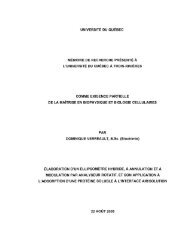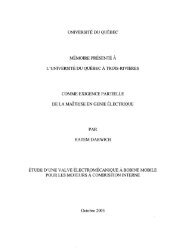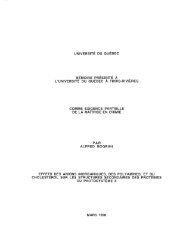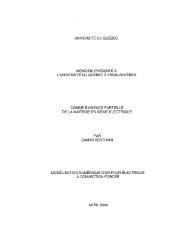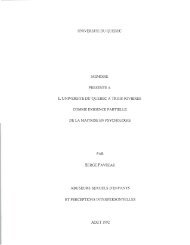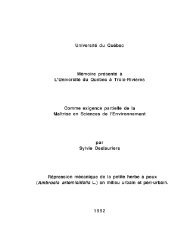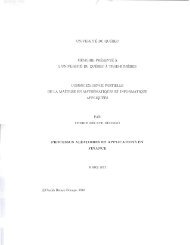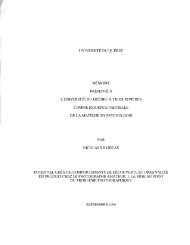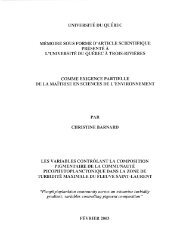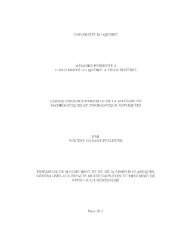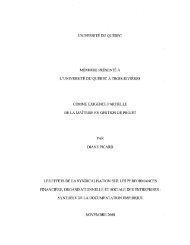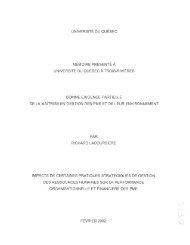Biomanipulation du meunier noir (Catostomus commersoni)
Biomanipulation du meunier noir (Catostomus commersoni)
Biomanipulation du meunier noir (Catostomus commersoni)
Create successful ePaper yourself
Turn your PDF publications into a flip-book with our unique Google optimized e-Paper software.
3.2 INTRODUCTION<br />
Originally developed by Shapiro et al. (1975), the concept ofbiomanipulation has<br />
been used for water quality improvement (Jorgensen and de Bemardi 1998), to study<br />
trophic interactions in freshwater lakes through fish removal or stocking (Carpenter et al.<br />
1985; Eiser et al. 1995) as weIl as to restore stunted fish populations (Langeland 1986;<br />
Donald and Alger 1989; Amundsen et al. 1993). In recent years, it has been used<br />
increasingly as a tool in the management of aquatic ecosystems (Mehner et al. 2002;<br />
Angeler et al. 2003; Jacobsen et al. 2004). In particular, the mass removal ofundesirable<br />
species shows promising potential for the combined management of water quality and<br />
sustainable fisheries (Lammens 1999; Mehner et al. 2001). Many studies have evaluated<br />
the short-term impacts of mass removals on the fish community of different lakes<br />
(Meronek et al. 1996; Brodeur et al. 2001) and the compensatory responses of the<br />
species involved are relatively weIl documented. However, in spite of the power ofthis<br />
approach to investigate the effect of both intra- and interspecific competitions, very few<br />
studies investigated the long-term effects of biomanipulations on the whole fish<br />
community as weIl as on the life history traits of populations. Furthermore, few studies<br />
investigated the response of a species following the cessation of a biomanipulation.<br />
White suckers, <strong>Catostomus</strong> <strong>commersoni</strong>, were intro<strong>du</strong>ced in many lakes of the<br />
Canadian Shield by bait fishermen, between 1940 and 1960 (Magnan 1988; Tremblay<br />
and Magnan 1991; Lacasse and Magnan 1992). Known to be a competitor of most<br />
species with littoral alimentation (Johnson 1977; Magnan 1988; Chen and Harvey 1995),<br />
the white sucker in<strong>du</strong>ces a shift in the diet of brook trout when living in sympatry with<br />
this species (Magnan 1988; Tremblay and Magnan 1991; Lacasse and Magnan 1992).<br />
Given the impacts of white sucker populations on brook trout sport fishing yields, a<br />
mass removal program for the white sucker was implemented on five Québec lakes<br />
between 1995 and 2004 by the Ministère des Ressources Naturelles et de la Faune<br />
(MRNF) <strong>du</strong> Québec. This program provides a good opportunity to evaluate the fish<br />
community response to variations in intra- and inter-specifie competition, <strong>du</strong>ring and<br />
three years after the cessation ofwhite sucker mass removal, as weIl as the time required<br />
55



